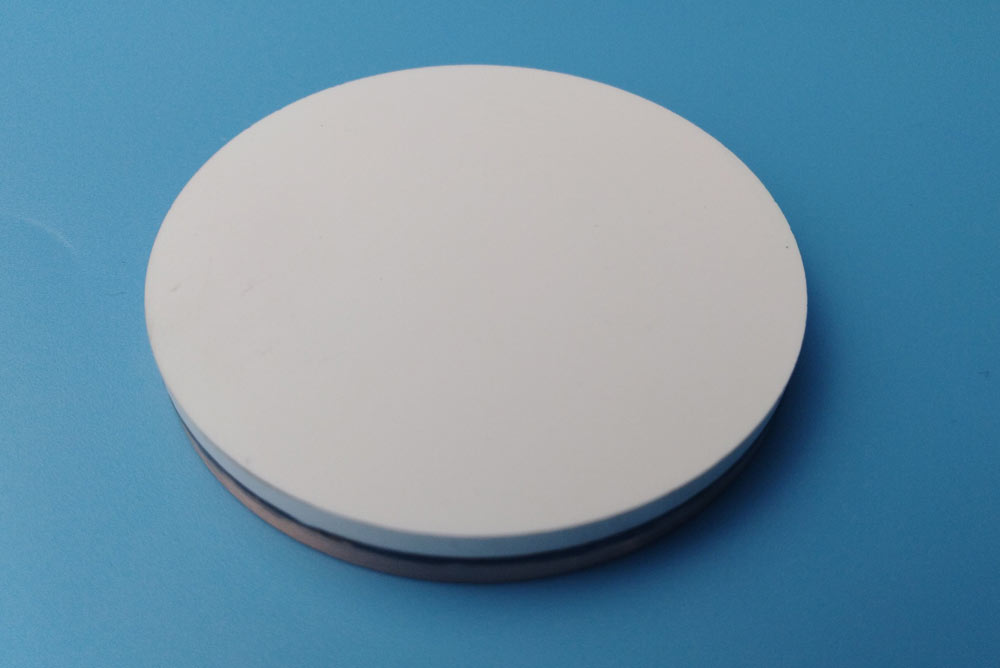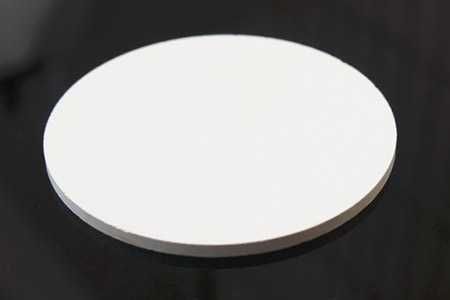Metallic Bonding of Sputtering Targets
views, Updated: 2021-09-23
There are many reasons for bonding a sputtering target to an associated backing plate. In essence, all of these reasons relate to the physical properties associated with the composition of the sputtering target under consideration and the backing plate material's choice to be utilized in the target assembly. One of the main considerations for any deposition process regarding plasma deposition is the rate of heat dissipation as a function of ion bombardment rate.
During the deposition process, a plasma is developed whereby an outer electron (negative charge) is stripped off from the working gas's outer shell, thus creating a net positive charge (ion) on the associated molecule.
This positively charged ion can be directed toward the sputtering target under proper conditions by applying a negative voltage and current on the associated sputtering target. This is neither a thermal or chemical reaction but rather a momentum transfer from high energy impinging ions striking a static atomic layer on the target's surface. Energy transfer is usually sufficient to cause internal atomic bond breaking in the host target material and a resultant cascade of atoms and/or molecules to break away from the target surface at a rate dependent on the external energy applied from the power supply. The result is an exothermic reaction due to the atomic bond breaking on the target surface. In essence, this can lead up to temperature measurement on the target surface of up to one million degrees Centigrade on an atomic level at the target surface.
This temperature is only associated with a single atomic layer on the target surface, but, none the less, it needs to be dissipated if the integrity of the sputtering process, and plasma deposition, is to continue. Most cathode assemblies that supply the electrical and magnetic energy to the sputtering targets are designed to provide water cooling to the sputtering target to dissipate this exothermically generated heat. In all cases, this water cooling is provided, either directly or indirectly, to the bottom or backside, of the sputtering target being deposited. This necessity that the heat generated on the target surface be transferred through the target's thickness to the water cooling channels associated with the cathode assembly. In the case of highly conductive metallic targets, this is generally not a problem. For less conductive materials, the results may be catastrophic. Heat dissipation during the sputtering process is a major consideration. For any given tool configuration, the design and the associated physics are well defined and inalterable. Thus, the thermodynamics are fixed, and the only variable is the composition of the sputtering target itself. A highly conductive ductile material, such say gold, can tolerate a relatively high deposition rate.
Since the heat dissipation from the exothermically generated momentum transfer on the target surface can be readily transferred through the target thickness to the water cooling associated with the cathode assembly on the target's bottom side. It is generally not required for these types of materials to have a highly conductive backing plate bonded to the target. Without getting into the physics of the magnetic attraction at the target surface, it is generally possible to utilize an unbonded sputtering target of up to 0.250" (6mm) or more in thickness in such cases. This is a general statement. Low melting temperature target materials (Hg, Cs, Ga, In, Se. Sn.) can easily be melted during the deposition process if care is not taken to alleviate water cooling deficiency during deposition.
So the issue of target bonding is generally not associated with normally highly conductive ductile metals. On the contrary, the issue here is with less conductive, brittle materials. These may be refractory metals, certain metal alloys, ceramics, or perhaps composite materials. It all comes back to the rate of heat dissipation or thermal conductivity to the target material's physical ductility or malleability. If the heat associated with the atomic bond breaking cannot be sufficiently dissipated, the target may crack, spall, evaporate, shatter, explode. All of which are detrimental to normal deposition processing. On an atomic level, any two "Flat" surfaces, when placed together, are only actually touching at three points. In the case of a sputtering target that is placed and then mechanically clamped into the water cooling cavity of a cathode assembly, all the heat and power associated with the deposition process must be generated through these three points is a very inefficient scenario. It is far more efficient to dissipate this heat and transfer the current through the target/cathode interface with a 100% contact surface.
It is quite often advisable to bond a less conductive brittle target to a highly conductive backing plate to help facilitate cooling during the deposition process. We have discussed the mechanism of bonding previously. Hence, it is only necessary to elucidate the advantages of bonding a highly conductive backing plate to a far less conductive sputtering target material here. In such cases, it may be advisable to further increase the thermal (and electrical) conductivity by reducing the target thickness. In general, it is recommended to use a 0.125" (3mm) thick sputtering target bonded to a 0.125" (3mm) thick backing plate rather than trying to dissipate the heat associated with the bond breaking through a thicker, poorly conductive 0.250" (6mm) material.
AEM Deposition is a senior sputtering targets manufacturer and exporter. We provide all kinds of sputtering targets for sale; various materials, shapes, and sizes are optional. In addition, we also offer a target bonding service. If you are interested in our products, you can click the link to get more details or send an email.
LATEST NEWS
2024-05-24
2023-10-17
2023-10-17
2023-09-15
2023-09-15
 +86-731-89578196
+86-731-89578196
 [email protected]
[email protected]
















